CATEGORIZING THE TARGET STRUCTURE (SPLIT INFINITIVE)
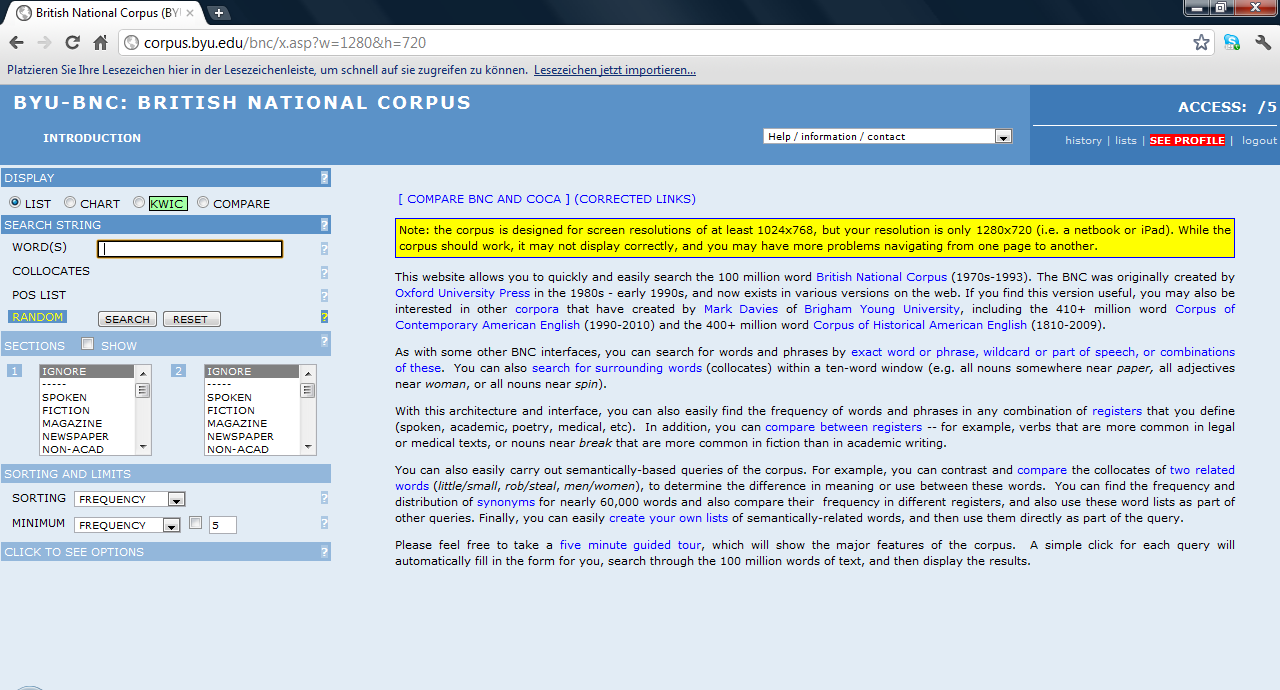
At first create a POS-tag-based query which is likely to retrieve many instances of the split infinitive, such as “[TO0] [AV0] [VVI]”.
Then enter the search pattern into the query window and click SEARCH. Be sure to select KWIC from the DISPLAY menu as this will enable you to view your Key Word In Context and categorize the target structure.
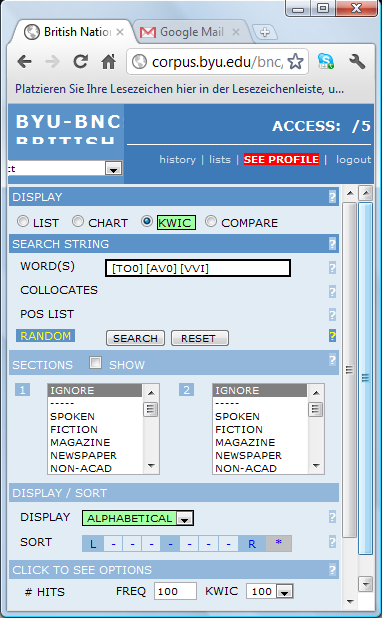
This will provide you with the following list of retrieved results:
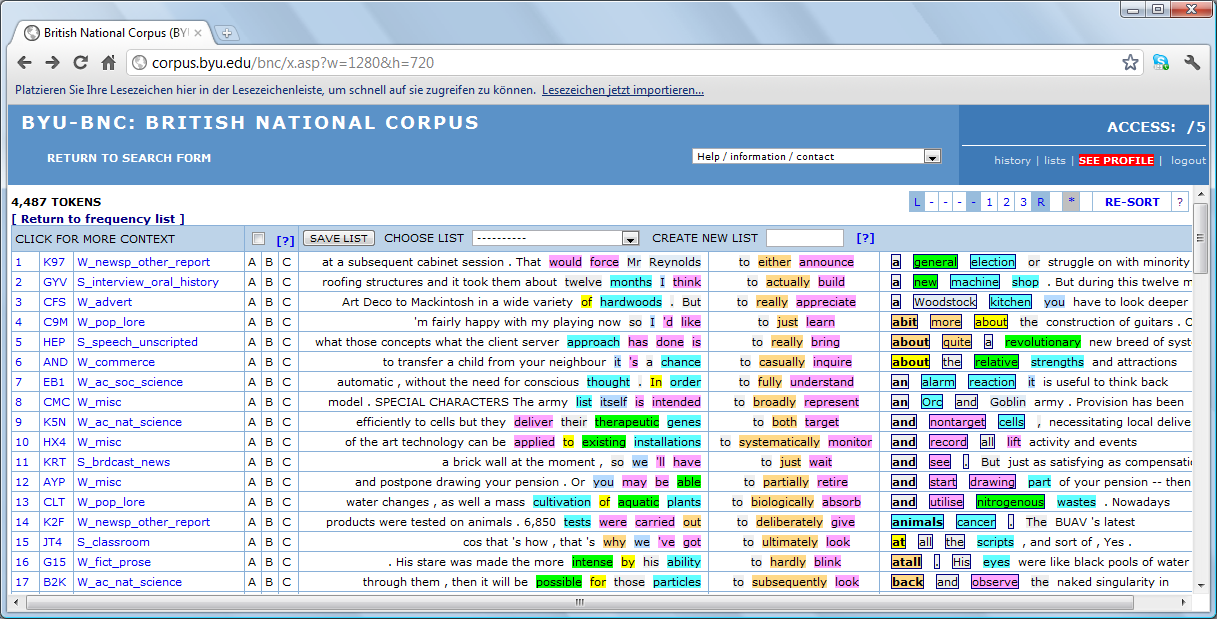
Now check whether the first 50 hits illustrate an instance of a split infinitive or not and categorize them accordingly.
As you can see in the windows above and below, there are three letters (A,B,C) to the left of each concordance line, which enable you to categorize the entries within a list according to different groups. In our case, the list will consist of the first 50 hits and will be subdivided into two groups: "split_infinitive = A" and "no_split_infinitive = B". If necessary, "C" may represent the category "other".
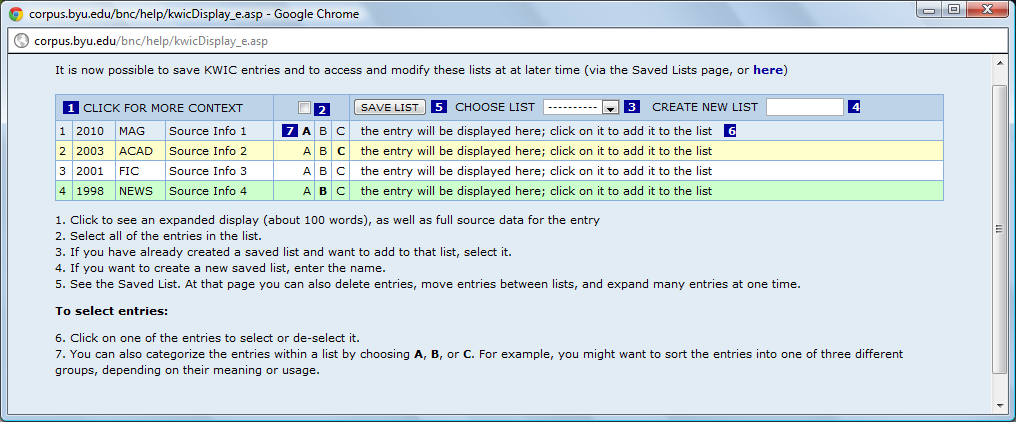
At first, you will want to CREATE [A] NEW LIST. To do so, enter "Split infinitive" into the identically named window. Now check whether the first 50 hits truly represent an instance of a split infinitive and label them accordingly by either clicking "A" or "B".
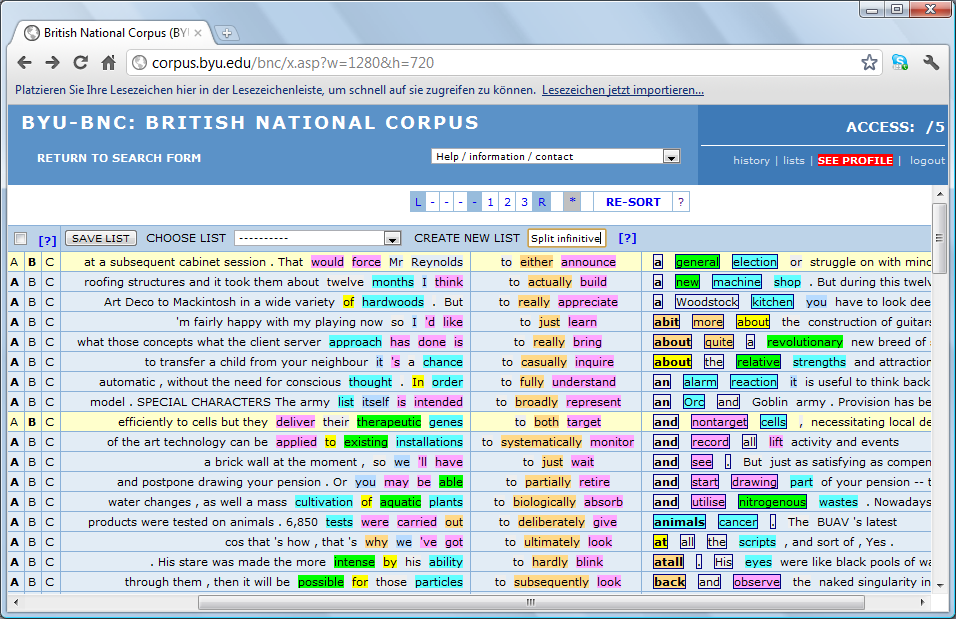
RESULTS
"That would force Mr Reynolds to either announce a general election or struggle on with minority status and face defeat on an inevitable no-confidence motion within the week."
According to www.merriam-webster.com, a split infinitive is "an infinitive with to having a modifier between the to and the verbal (as in “to really start”)", with adverbs and adjectives typically functioning as modifiers. In the example above, the word "either", however, is neither an adverb, nor an adjective, but a conjunction introducing the first of two options. Therefore it may be argued that concordance line #1 does not exhibit an instance of a split infinitive.
"Retroviruses can transfer genes efficiently to cells but they deliver their therapeutic genes to both target and nontarget cells, necessitating local delivery of the recombinant retroviruses to specific target tissues 7,8, or retrovirus-mediated gene transfer to target cells ex vivo, followed by reimplantation of these cells 9."
The BYU-BNC labeled "to both target" as an instance of a split infinitive, regarding "to" as an infinitive marker, "both" as an adverb, and "target" as the bare infinitive form of the verb "to target". A closer look, however, shows that "to" functions as a preposition, "both" as a conjunction and "target" as the attributive noun modifying the noun "cells". Accordingly, "target" is not a verb, but the first word of the compound noun "target cells".
The remaining results are all instances of a split infinitive.
Created with the Personal Edition of HelpNDoc: Full-featured EBook editor